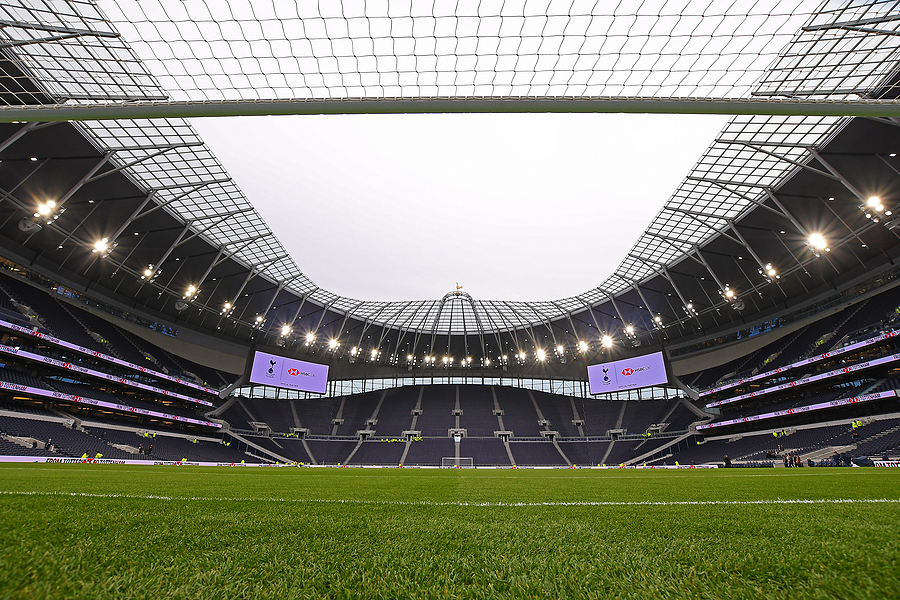The development of LED signage at sports stadiums has been a very notable feature of advertising at venues, where once wooden boards offered static displays or the names of companies were written on sloping stand roofs.
All that has changed – and not least because most cantilever roofs slope slightly upwards, rather than downwards like their predecessors. More importantly for spectators, stand roofs are not held up by view-obstructing pillars.
More modern stadiums – whether old grounds improved or completely new ones – can provide plenty of other visual enhancements too, from big screens to more space and facilities for LED signage. And more advertising screens means extra revenue for clubs.
This week, Tottenham Hotspur showed off what their new stadium can do once again, with its external facades turned purple for the Paralympic Games. The club noted this is just a hint of its new facilities, which include many provisions made for those with disabilities of all kinds. Such things are, of course, much more possible in a state-of-the-art stadium with LED display technology.
Across London, Wembley displays the same benefits of modernity. While the oft-illuminated arch is often the focal point in the way the twin towers were on the old stadium, the latest development at the venue has been the installation of LG’s high brightness LED signage, which made its debut at the FA Community Shield match this month.
This included a 424.5 sq m façade at the Great Hall, with two 207.9 sq m screens on either side, with these units being designed to produce very clear video and text images to inform and entertain.
As Inside CI reports, this is just one of the forms of LED signage that is expected to be implemented at the stadium over the curse of this season, which fans will see at England games and major domestic semi-finals and finals in early 2022.
Head of the Information Display business unit of LG Electronics Business Paik Ki-Mun said: “By showcasing our solutions at international landmarks, we’re able to demonstrate the advantages of our advanced LED technology to a global audience.”
As the report noted, LG already provides this technology at the Tottenham Hotspur stadium – all part of the capacity that club has to provide the best visual entertainment and information, as well as advertising, to those attending games.
Manchester City also use this technology, again at a 21st century stadium. This is in contrast with neighbours Manchester United, whose Old Trafford stadium is, along with Liverpool’s Anfield home, an exception among Premier League clubs in lacking a big screen.
These may be famous old venues, but their designs and configurations – despite both including stands built in the 21st century – may have left them trailing behind other venues when it comes to being able to make the most of LED signage, at least inside the stadium.
In the case of Old Trafford, the club’s unpopular owners the Glazer family have budgeted £20 million for some much-needed improvements, following widespread criticism of the state of the venue, but this first phase focuses mainly on dressing rooms and the press facilities.
This is part of a wider investment programme, but it remains to be seen if this will extend to the wider adoption of new LED signage technology so impressively displayed at Tottenham and Wembley.

